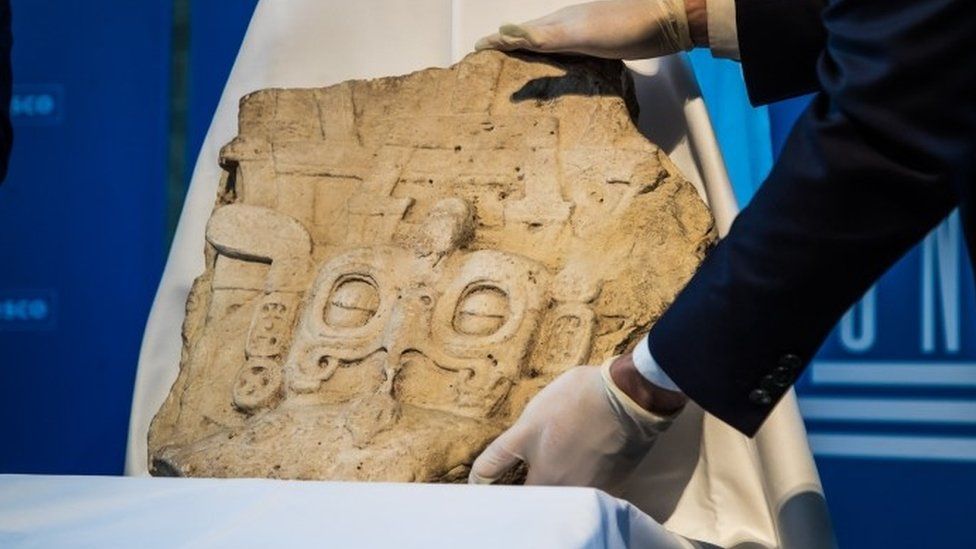A private collector is returning a Mayan artefact to Guatemala
A private collector has returned a Mayan artefact to Guatemala after it was initially slated for auction in 2019. The stone fragment depicts a bird headdress belonging to an ancient ruler of Piedras Negras, the capital of a Mayan kingdom that flourished between the 4th century BC and 9th century AD and is located in what’s now northwestern Guatemala.

Hundreds of Mayan artefacts were discovered along train construction routes in Mexico.
The object was likely looted from a Mayan archaeological site in the 1960s and eventually ended up in the hands of a prominent Los Angeles art dealer, the Los Angeles Times reported.
From there, it was bought by another art dealer in Paris and ultimately acquired by private collectors Manichak and Jean Aurance, according to the newspaper. Then in 2019, it was included as part of an auction of pre-Columbian artefacts in Paris, estimated to fetch $27,000 to $39,000.
Guatemala and Mexico objected to some of the items in the auction being put up for sale, arguing that they had been stolen and demanding their return.
Though the auction continued mostly as planned, the carving of the bird headdress was withdrawn from the sale after Guatemala was able to prove its provenance with drawings and pictures dating back to its discovery in 1899, a spokesperson for UNESCO wrote in an email to CNN.
Negotiations took place between Guatemala, the French government, UNESCO and the private collector, the spokesperson said, and the collector ultimately decided to return the artefact to Guatemala. On Monday, UNESCO held a ceremony to mark the return.

“The voluntary handover of this fragment of a Mayan stela to its homeland in Guatemala showcases the evolution of the international environment in favour of the return of emblematic cultural objects and artefacts to their homelands under UNESCO’s guidance over the last 50 years,” UNESCO Director-General Audrey Azoulay said in a statement.
“It also shows the importance of the UNESCO 1970 Convention in fighting the illicit trafficking of cultural objects. This success story has been possible thanks to international cooperation and a private collector’s goodwill; it is a model for others to follow.”
The artefact will soon be sent to the National Museum of Archaeology and Ethnology of Guatemala City where visitors will be able to view it and learn about its history, according to UNESCO.
The stone carving’s return to Guatemala comes at a time of wider reckoning for museums, galleries and other institutions.
In recent years, several such institutions have taken steps to repatriate historical objects to their places of origin — Cambridge University is set to return a Benin bronze looted during British colonial rule to Nigeria this week, while the Metropolitan Museum of Art in New York announced earlier this year it was returning three treasures of African art to Nigeria as well.
Meanwhile, the pressure on museums continues to mount — Cambodia recently began pushing the Met to review the provenance of a number of items, asserting that they were looted from the country’s ancient sites during decades of war and tumult.





